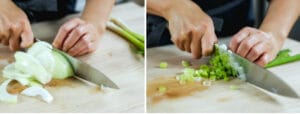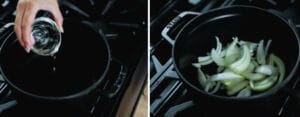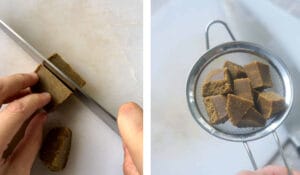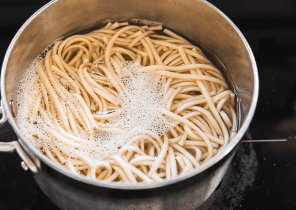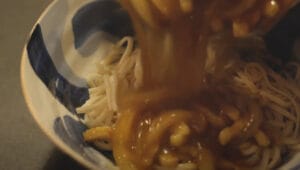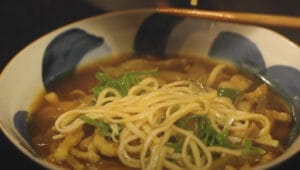Warm up with James’ easy Japanese udon curry recipe. This 20 minute noodle dish packs complex flavors into each chewy, saucy bite.
I absolutely love Japanese curry. There’s just something so warm, aromatic, and soothing about that sweet and savory sauce coating noodles or rice. And when you add chewy udon noodles to the mix, it becomes the ultimate comfort food in my opinion. The curry clings perfectly to each thick, slippery noodle and the two components really allow each other to shine.
The great thing about curry udon too is that it comes together in almost no time at all. Unlike some curries which require lengthy prep and simmering times, this sauce can be thrown together in just 20 minutes start to finish. That makes it a perfect weeknight dinner when you want something fast, filling, and delicious.
So if you’re looking for a new noodle dish to add to your regular rotation, I highly recommend giving this curry udon recipe a try. The complex flavors of the curry paired with the simple starchy goodness of udon is a match made in heaven. I can’t wait for you to try it and let me know what you think! Now let’s get cooking!
Japanese Udon Curry Recipes
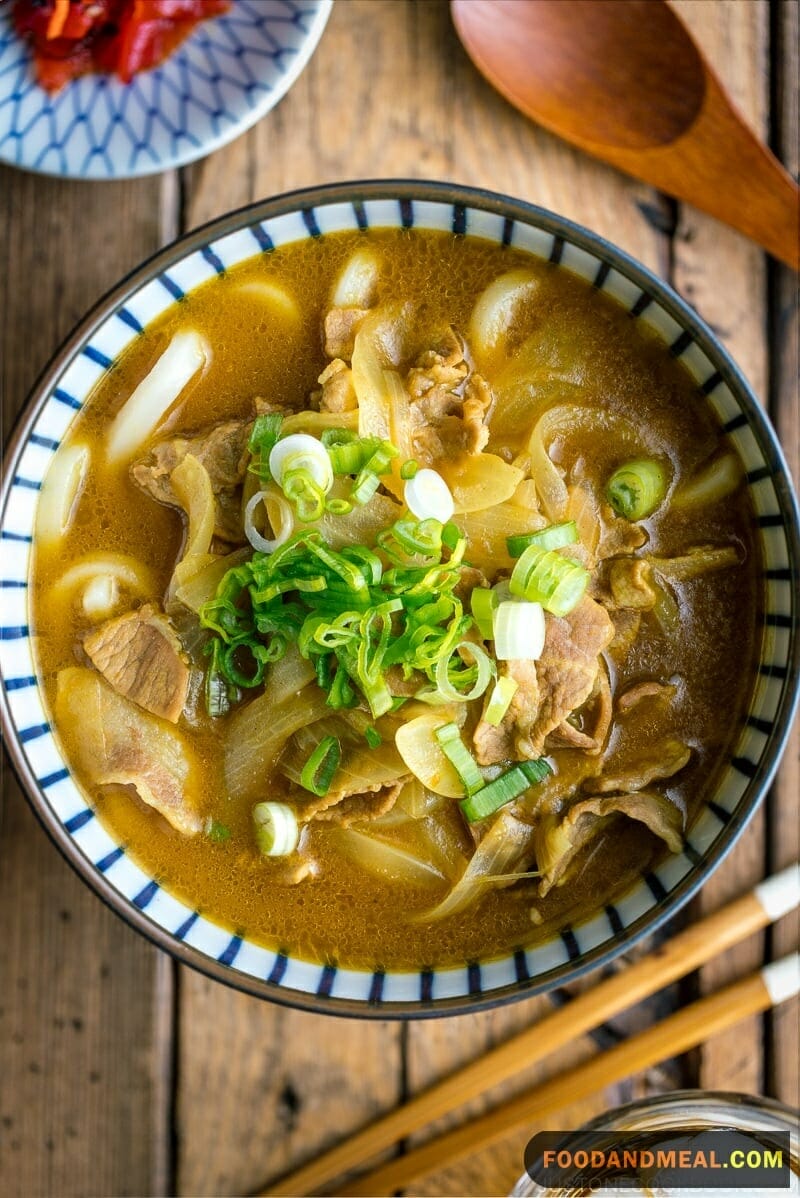
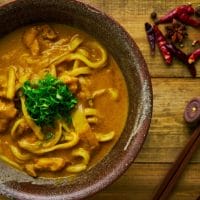
Japanese Pork Udon Curry
Ingredients
Optional: shichimi togarashi (Japanese spicemixture)
Instructions
- To create curry udon, cut onion, carrot and potato in small sized chunks. Add to pan with 4 fluid ounces for each block of curry roux.

- Bring water to boil. Allow to simmer for about 20 minutes. Vegetables should soften.

- Add two to three curry roux blocks to pot. Allow the mixture to simmer for about 10 minutes. Stir until curry sauce is smooth and thick.

- Add 4 tbsp. of tsuyu stock to 13 & 1/2 fluid ounces of water in separate pan. Boil, creating noodle soup.

- Boil udon noodles in boiling water for several minutes. Drain in a colander.

- Place cooked udon noodles in bowl. Add noodle soup and curry sauce.

- Garnish with spring onions. Serve promptly.

Video
Notes
Nutrition
© Food And Meal
This website provides approximate nutrition information for convenience and as a courtesy only. Nutrition data is gathered primarily from the Spoonacular Database, whenever available, or otherwise other online calculators.
Slow Cooker Udon Curry Recipes
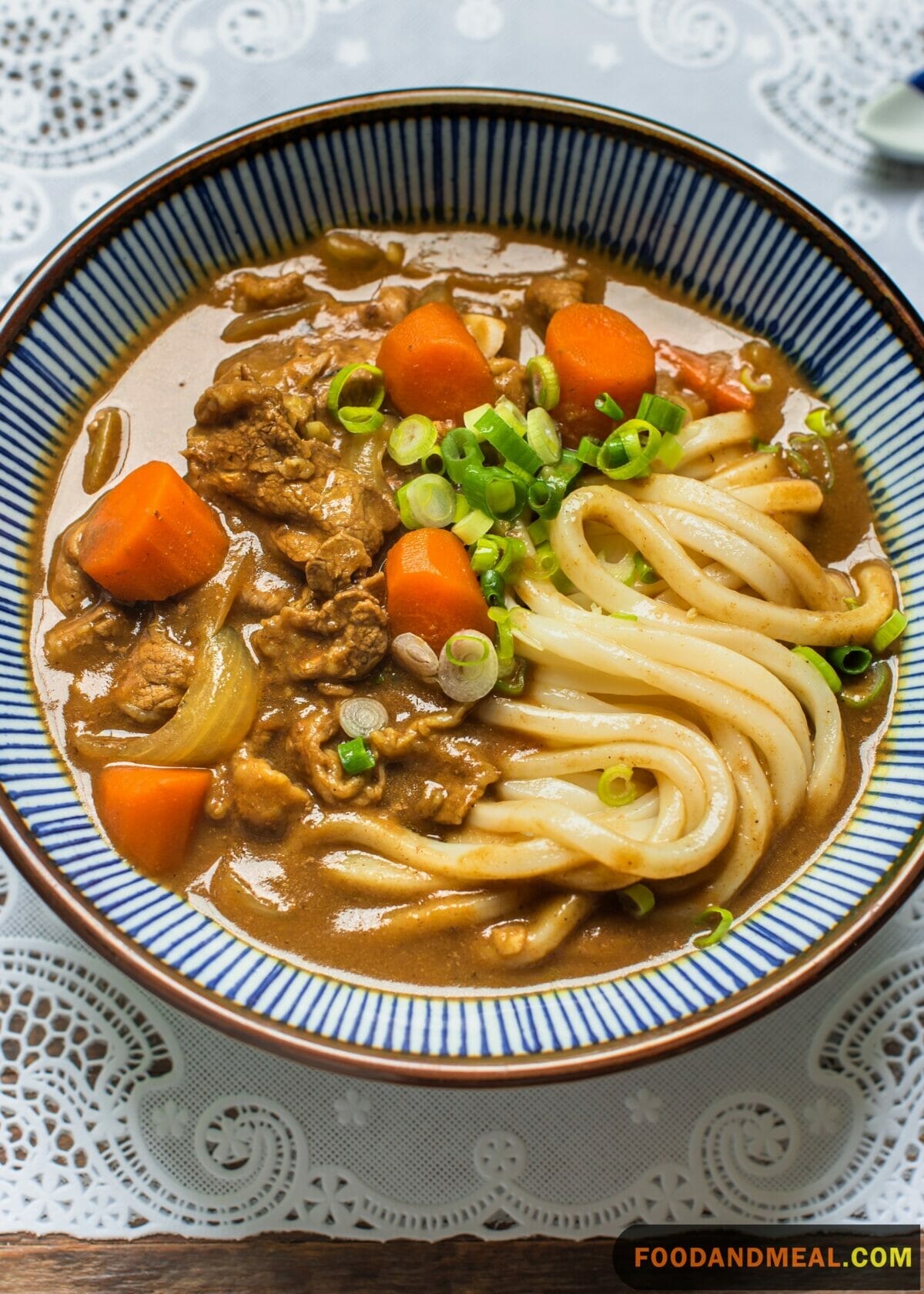
Ingredients:
- 1 pound of boneless chicken thighs, cut into bite-sized pieces
- 1 large onion, finely chopped
- 3 cloves of garlic, minced
- 2 carrots, sliced into rounds
- 2 potatoes, peeled and diced
- 1 red bell pepper, chopped
- 1 cup of frozen peas
- 2 cups of chicken broth
- 1 can of coconut milk (13.5 ounces)
- 2 tablespoons of yellow curry powder
- 2 tablespoons of soy sauce
- 1 tablespoon of brown sugar
- Salt and pepper, to taste
- 8 ounces of udon noodles
- Fresh cilantro leaves, for garnish
- Lime wedges, for serving
Instructions:
- In a skillet, sauté the chicken pieces until they’re lightly browned on all sides.
- In your slow cooker, combine the sautéed chicken, chopped onion, minced garlic, carrots, potatoes, red bell pepper, and frozen peas.
- In a separate bowl, whisk together the chicken broth, coconut milk, yellow curry powder, soy sauce, and brown sugar. Pour this mixture over the ingredients in the slow cooker. Season with salt and pepper to taste.
- Cover and cook on low for 6-8 hours or on high for 3-4 hours. The slow cooking process will allow the flavors to meld beautifully.
- About 30 minutes before serving, cook the udon noodles according to the package instructions. Drain and set them aside.
- Once the vegetables in the slow cooker are tender, stir in the cooked udon noodles. Let them soak in the delicious curry sauce for about 10-15 minutes.
- Taste the curry and adjust the seasoning as needed.
- Serve the Slow Cooker Udon Curry hot, garnished with fresh cilantro leaves and accompanied by lime wedges for a burst of citrusy freshness.
How to make curry udon with leftover curry
The process begins with the soulful base of dashi, a Japanese stock that is the cornerstone of many traditional dishes. To this, you add the rich, velvety leftover curry, which carries with it the memories of a meal shared with loved ones or the satisfaction of a dinner that warmed you from the inside out. The curry’s spices seem to bloom anew as they meld with the dashi, creating a broth that is both familiar and exciting.
As the aromatic fusion simmers gently on the stove, you prepare the udon noodles. These thick, chewy strands are a testament to the joy of texture in our food, providing a satisfying bite that is both indulgent and comforting. Cooking the noodles separately ensures they retain their perfect consistency, never becoming too soft or losing their identity in the rich curry broth.
Pouring the steaming curry soup over the cooked udon feels like an act of alchemy, as two distinct elements come together to form something greater than the sum of their parts. A sprinkle of chopped green onions adds a burst of color and a fresh, sharp counterpoint to the deep flavors of the curry.
Here is a step-by-step guide to making curry udon with leftover curry:
- Assess the Leftover Curry: Check the consistency of your leftover curry. It should be thick as it will form the base of your curry udon broth. If it’s already quite thin, you’ll need less additional liquid.
- Prepare Additional Liquid: Depending on how much leftover curry you have and your desired consistency, prepare some dashi broth or use water or chicken/vegetable stock. For a standard serving, you might start with about 1 to 1.5 cups of liquid per serving of curry udon, adjusting as necessary.
- Heat the Curry: In a pot, gently heat the leftover curry to loosen it up. This is especially important if the curry has been refrigerated and has solidified.
- Combine Curry with Liquid: Gradually add the prepared liquid to the warming curry, stirring continuously. You’re aiming for a soupy consistency that is neither too thick nor too watery.
- Adjust Seasonings: Taste the broth and adjust the flavor as necessary. You may want to add a touch of soy sauce, mirin, or sugar to balance the flavors, or a bit of curry powder or spice to intensify the curry flavor.
- Cook the Udon Noodles: If using fresh or frozen udon, simply warm them through in boiling water, being careful not to overcook them as they will continue to cook slightly in the hot broth. If using dried udon, cook according to package instructions until they are just tender.
- Assemble the Dish: Once the noodles are cooked and drained, divide them into bowls. Ladle the hot curry broth over the noodles, ensuring that the noodles are well covered.
- Add Toppings: Traditional toppings for curry udon might include chopped green onions, a shichimi togarashi (a Japanese spice blend), a boiled egg, or tempura. Feel free to add any of these or other preferred toppings.
- Serve Immediately: Curry udon is best enjoyed immediately while the broth is hot, and the noodles are at their best texture.
In my personal opinion, the act of transforming leftovers into a dish like curry udon is a small, everyday triumph. It’s a celebration of flavors, a nod to sustainability, and a testament to the creativity that cooking invites. This dish isn’t just a recipe; it’s a narrative of warmth, ingenuity, and the simple pleasure of a hot meal on a cold night.
Tips about Udon Curry Recipe
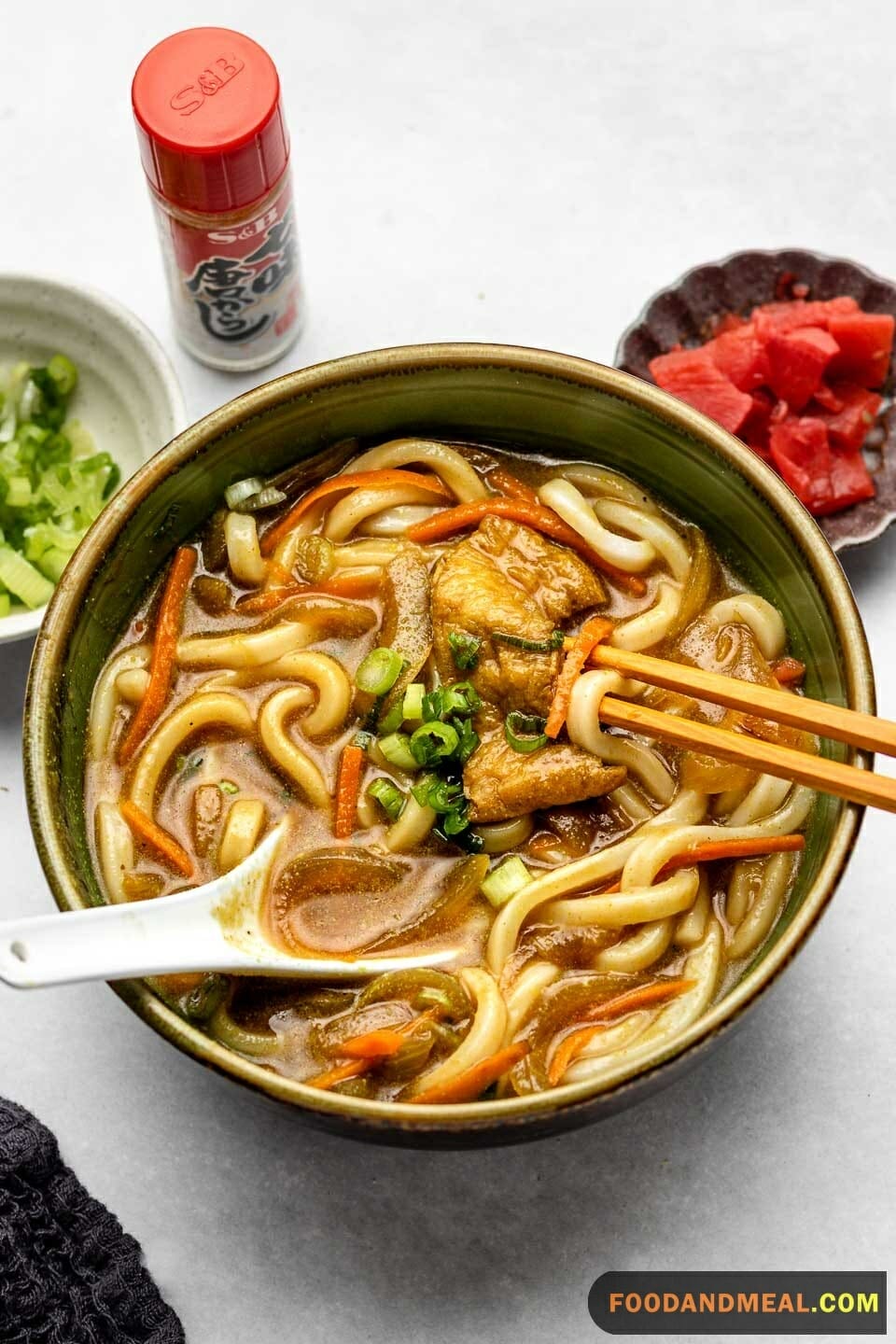
Serving Suggestions for Udon Curry Noodles
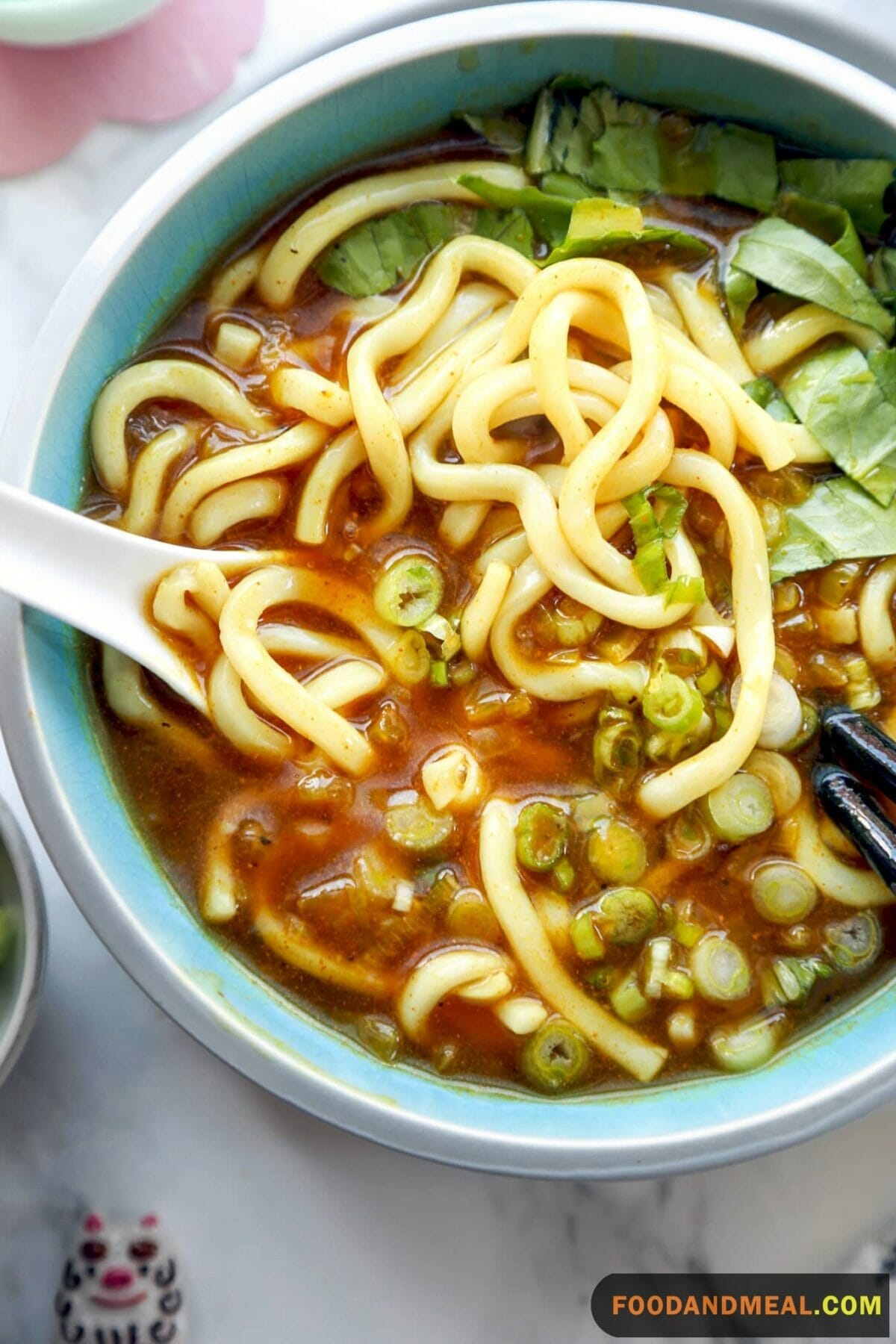
- Serve with grilled or pan-fried fish like the Grilled Sea Bream, BBQ Prawns, or Eel from the Grill for a surf and turf style meal
- Pair with lighter vegetable sides like the Farmer’s Salad, Tramezzini with Peppers, or Grilled Vegetables Panini to balance the richness of the curry
- For heartier pairings, try the Quesadillas or Ham/Salami Paninis
- The curry would go nicely with the Soy Dipping Sauce or other Japanese flavors like the California Maki roll or Japanese Green Tea Rice
- For vegetarian pairings, the Sweet and Spicy Roasted Vegetables, Bean Sprout Tonkotsu Ramen, or Vegetable Maki would be delicious
- The sweetness of the Chocolate Macarons or Coconut Date Bites would make a nice dessert contrast
Top 9 FAQs about udon curry recipe
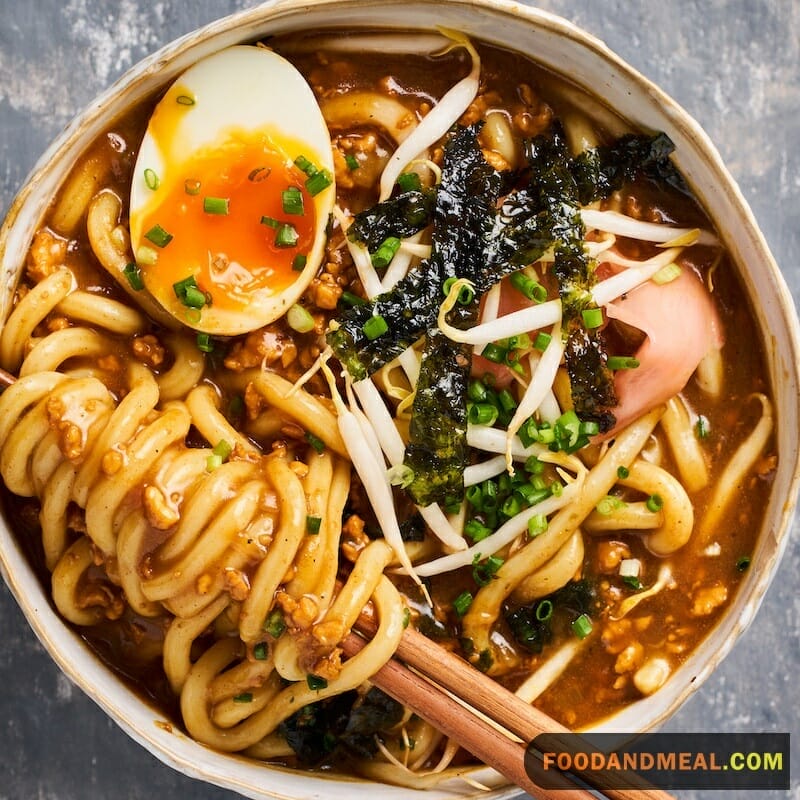
1. What is curry udon made of? Curry udon typically consists of thick udon noodles served in a flavorful curry broth. The curry broth is made with ingredients such as curry powder, soy sauce, mirin, and dashi, and it often includes vegetables like carrots, onions, and potatoes. The dish may also include a variety of proteins such as beef, pork, shrimp, or tofu.
2. Is udon considered healthy? Udon can be a healthy option, especially when it includes a balance of vegetables, proteins, and a moderate amount of broth. However, the healthiness of the dish depends on the specific ingredients used and the portion size. Choosing lean proteins and incorporating a variety of vegetables can contribute to a nutritious meal.
3. What is udon broth made of? Udon broth is typically made with a combination of ingredients such as dashi (a Japanese stock made from fish and seaweed), soy sauce, mirin (sweet rice wine), and sometimes sake. The broth may also include additional seasonings like sugar or salt to enhance the flavor. The specific recipe can vary, and some versions may include other ingredients for added depth.
4. Why does udon taste so good? Udon’s delicious taste is attributed to the combination of rich, savory broth, the chewy texture of the udon noodles, and the flavorful ingredients used in the dish. The balance of umami from the broth, the sweetness from mirin, and the depth of flavor from curry powder or other seasonings contribute to the overall deliciousness of udon.
5. Can I use other meats in this recipe? Certainly! You can use chicken, shrimp, or tofu as protein alternatives. Adjust the cooking time accordingly based on your choice.
6. Is it possible to make this curry in advance? Yes, Udon Curry tastes even better the next day. Prepare it a day ahead, let it cool, and refrigerate. Reheat it gently on the stovetop or in the microwave.
7. How do I store leftovers? Store any leftover Udon Curry in an airtight container in the refrigerator. It can be kept for up to 3-4 days. Reheat as needed.
8. Can I freeze Udon Curry? Freezing is possible, but it’s best to freeze the curry without the noodles. When reheating, cook fresh noodles separately and add them to the hot curry.
9. What type of curry powder should I use? You can use your preferred curry powder, but Japanese curry powder is ideal for an authentic flavor.
Conclution
In closing, I hope this udon curry recipe has inspired you to get into the kitchen and whip up a big pot of this delicious noodle dish. With its complex flavors and easy preparation, it truly makes for the ultimate comfort food. Whether you’re looking for a quick weeknight meal or something warm and filling on a cold day, give this recipe a try. I have no doubt it will become a new favorite!
I’d love to hear your feedback and see photos if you end up making this curry udon at home. Please feel free to leave a comment below sharing your experience cooking this recipe. And stay tuned for more tasty content coming your way soon here on the Food And Meal blog!



